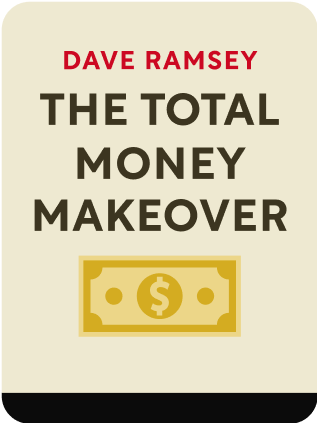

This article is an excerpt from the Shortform book guide to "The Total Money Makeover" by Dave Ramsey. Shortform has the world's best summaries and analyses of books you should be reading.
Like this article? Sign up for a free trial here .
What are the 7 baby steps to financial freedom from Total Money Makeover? How do the 7 baby steps to financial freedom come together to change your life?
The 7 baby steps to financial freedom are the parts of the Total Money Makeover program. They start with a $1000 emergency fund and end with enjoying your financial freedom.
Read on for the 7 baby steps to financial freedom and what they mean.
The 7 Baby Steps to Financial Freedom
How you handle your finances determines whether you succeed in life. In the Total Money Makeover, radio talk show host and author Dave Ramsey lays out simple steps for freeing yourself from debt and setting yourself up for success: following a monthly budget, buying only what you can afford, eliminating consumer debt, saving for emergencies, investing for retirement and your kids’ college education, and paying off your mortgage. Intended for everyone—from high earners to people thousands of dollars in debt—Ramsey’s common-sense principles put you in control of your money and your life.
Step #1: Save $1,000 Cash
The first of the 7 baby steps to financial freedom gives you an emergency fund. Everyone needs a rainy day fund because it’s guaranteed to rain—there’s always a financial emergency—at some point.
In a typical 10-year period, according to Money magazine, 78% of people will have a major financial challenge, such as a layoff or firing, an unexpected pregnancy, or illness. Things happen and you need to be ready with an emergency fund.
Saving $1,000—fast—is the first step in the Total Money Makeover because, without a financial cushion for emergencies, an unexpected expense is likely to derail the program. If you respond to a financial emergency by turning to debt after starting a money makeover, it will be like breaking a diet and you’ll feel like a failure.
Besides keeping your reform efforts on track, having an emergency fund is a hedge against Murphy’s law—trouble seems to dog anyone without a safety net. Granted, $1,000 won’t get you through a life-altering crisis, but it’s enough to keep smaller crises from triggering debt. You’ll build on this amount in step #3, when your finances are in better shape.
Step #2: The Debt Snowball
The big problem with debt is that it ties up your income with making payments, which keeps you from building wealth. You need to get rid of debt so you have control of your income and can put it to work for you.
It’s fairly easy to accumulate wealth when you don’t have car payments, a mortgage, and credit card or medical debt. To see how this works, consider the average person with a $50,000 annual income and the following payments:
- $850 house payment
- $180 car payment
- $165 student loan payment
- $185 credit card debt payment
- $120 other payments
Total: $1,995
But if you invested $1,995 a month in a growth-stock mutual fund, you’d be a millionaire in 15 years; it would grow to $2 million in five more years, to $3 million in three more years, $4 million in two and a half more, and to $5.5 million in two more years—a total of 28 years.
The key is to get out of debt so you can start investing. This is probably the toughest of the money makeover steps—it requires the most effort and sacrifice, plus your relentless, single-minded focus.
Step #3: Boost Your Emergency Fund
At this point, you’ve eliminated debt other than your mortgage and have $1,000 cash for emergencies. You’re now in control of your income and have momentum. The next step is boosting your emergency fund to give you a cushion against big, life-disrupting problems like a job loss or medical bills.
Remember, major financial emergencies are inevitable in life, and if you use debt to cover them, you’ll be back to square one. Everyone needs an emergency fund large enough to cover three to six months of expenses, enabling you to manage for up to half a year without an income. In one survey, 49% said they couldn’t cover even a month’s expenses if they lost their income.
The amount in your emergency fund should be between $5,000 and $25,000.
Step #4: Save for Retirement
The next of the 7 baby steps to financial freedom is building your wealth by investing for retirement—it’s the key to being financially fit for life. It requires gazelle intensity to get started, but once your nest egg is established, you can maintain your financial fitness with less effort, like a marathon runner who’s built up her strength through long practice and can run with less effort.
Many people invest in retirement so they can eventually escape a job they hate. But investing for the future in the Total Money Makeover program is more positive; the goal isn’t escape, but achieving financial security so you have choices: to work, write a book, travel, create art, and so on. If you invest wisely earlier in your life, you’ll reach a point where your money starts working more and you can work less, if at all.
Many people are likely to find themselves in a less enviable position. Various surveys on retirement saving have found:
- 70% acknowledge they haven’t saved enough for retirement.
- More than 40% haven’t tried to figure out how much they need for retirement.
- 40% of people making under $35,000 a year say winning the lottery would be the best way to ensure $500,000 at retirement.
- 80% think their standard of living will increase in retirement—although 56% in a CNN survey had less than $25,000 in savings.
Yet many people over age 65 are in dire financial straits. USA Today reported that out of 100 65-year-olds, 97 can’t write a $600 check, 54 are working, and only three are financially secure. Among people 65 and older, bankruptcies jumped 244% in a recent 10-year period.
This step is about acting now so you can be financially secure in your older years.
Step #5: Save for College
People have many erroneous beliefs about a college education, which lead them to make foolish spending decisions to ensure their children get a degree from an expensive college. For instance, many parents believe that:
- College is a guaranteed ticket to success, therefore it’s essential their child get a degree.
- An elite college provides a better education than a non-elite college. A degree from an elite college will open more doors than one from an average school.
But a college degree doesn’t guarantee a job, wealth, or success. Everyone knows a few disillusioned college graduates who can’t get a job. A degree only validates knowledge or indicates you’ve passed certain tests. Knowledge must be combined with other qualities—for instance, character, effort, persistence, creativity, and talent—to create success.
In the book Emotional Intelligence, author Daniel Goleman writes that 15% of success is attributable to education, while 85% stems from attitude, perseverance, diligence, and vision. (Shortform note: Read our summary of Emotional Intelligence here.)
Because of their unrealistic expectations for a college degree, many parents go into extreme debts or skimp on saving for their retirement or an emergency fund. In the process, they pass on harmful views of debt to their children.
Step #6: Pay Off Your Mortgage
At this point in your Total Money Makeover, you’re nearly debt-free, you’ve saved $10,000+ for emergencies, you’re investing 15% of your income, and you’re saving for your kids’ college education. This one of the 7 baby steps to financial freedom really makes you a financial elite.
Being totally debt-free puts you among the top 10% or 15% of Americans. This accomplishment is like achieving marathoner status as a result of great effort and persistence—but don’t be tempted to rest on your laurels. You can become an ultra-marathoner by completing step #6—paying off your home mortgage and becoming 100% debt-free.
By now you know how to do it. There’s no special formula. Devote every extra dollar you can find, beyond your emergency fund and investments, to paying extra on your mortgage each month until it’s paid off.
Most people believe that paying off a mortgage, especially early, is next to impossible. But numerous Total Money Makeover adherents do just that. For three to five years, they live differently from everyone else—sacrificing to pay off their mortgage. Then they continue to live differently from everyone else by being debt-free.
Most people who start a Total Money Makeover pay off their mortgage about seven years later.
Step #7: Enjoy Your Money
Completing six of the 7 baby steps to financial freedom puts you in rare company—among the 2% of Americans who are debt-free.
Because you’re debt-free, live on a budget, and have money for emergencies, you’re in control of your income and are building wealth. The only remaining question is what to do with your discretionary income.
There are three purposes for money:
- Having fun
- Growing your nest egg
- Giving
You should do all three of these things. Achieving financial fitness is like achieving physical fitness. You didn’t put in the work just to look good. Now you get to use your financial muscle.

———End of Preview———
Like what you just read? Read the rest of the world's best book summary and analysis of Dave Ramsey's "The Total Money Makeover" at Shortform .
Here's what you'll find in our full The Total Money Makeover summary :
- The 7 steps to achieving financial stability (you'll love #7)
- A fool-proof plan for becoming debt-free
- How myths about debt and money are crippling your financial health






